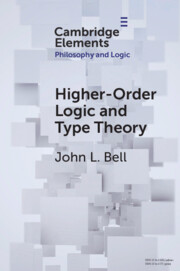Element contents
Higher-Order Logic and Type Theory
Published online by Cambridge University Press: 10 March 2022
Summary
Keywords
- Type
- Element
- Information
- Series: Elements in Philosophy and LogicOnline ISBN: 9781108981804Publisher: Cambridge University PressPrint publication: 31 March 2022
Bibliography
- 8
- Cited by



